The ADCAR Model is a change management strategy for businesses navigating organizational changes, such as implementing new software or restructuring their framework.
This technique offers a comprehensive framework that empowers all employees to effectively manage the change process, from the initial stages to completion, while offering a reliable means of measuring progress.
By incorporating the ADKAR model, businesses can significantly facilitate the transition process, ensuring a smoother and more successful outcome.
What is the ADKAR Model?
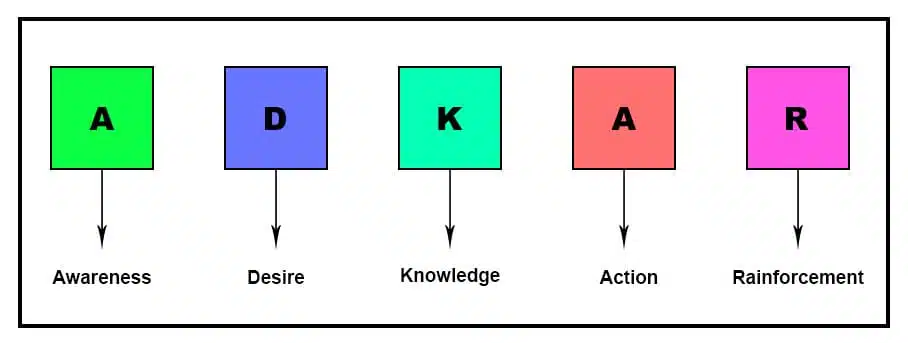
The ADKAR model, formulated by Jeff Hiatt, the esteemed founder of Prosci, in the late 1990s, emerged after meticulous observation of over 700 organizations undergoing transformations. Originally designed to equip managers with insights into change barriers, it now serves as an invaluable roadmap for effective change management.
At its core, the ADKAR model guides organizational changes within the workplace by providing individualized support to each employee throughout their transition. By leveraging this approach, management can identify and address potential roadblocks while empowering employees with answers, guidance, and a clear vision for the future.
Fundamentally, the ADKAR methodology recognizes that change manifests on a personal level, necessitating a gradual process of convincing individuals of the change’s necessity, fostering acceptance, and establishing mechanisms for ongoing reinforcement.
The ADKAR stands for:
A – Awareness: The first phase is awareness, which emphasizes the need for change.
D – Desire: Once employees are aware of the change, they will understand how the change will benefit them, and it develops the desire to change.
K – Knowledge: The next stage is determining the knowledge required to implement the change.
A – Ability: Ability is the capability and resources needed to learn the skills required for transition.
R – Reinforcement: Reinforcement is the last phase; it offers a follow-up strategy to ensure permanent change.
According to the ADKAR model, awareness and desire catalyze individuals to move away from their current situation where change is necessary but hasn’t yet commenced. As the transition unfolds, knowledge and ability emerge, while reinforcement directs attention toward the future. If a change fails to materialize, it is typically due to the presence of one or more of the five blocks.
Goals of the ADKAR Model
The ADCAR model has five goals:
Goal 1: Building Awareness
Employees’ comprehension of the necessity for change is crucial. When employees know the goals, they become motivated and are more likely to excel in facilitating a successful transition.
Conducting company-wide meetings and sending informative emails effectively communicate to employees the detrimental impact of the current setup on business growth. It restricts the ability to scale, resulting in a waste of both time and money. It is essential to emphasize to employees that new processes will streamline their work lives, making tasks more manageable.
Furthermore, creating an environment where employees feel comfortable asking questions and absorbing the provided information is important.
Goal 2: Increase the Desire to Make a Change
The employees’ willingness to embrace the change is crucial. Businesses can employ various strategies such as incentives and strategic role assignments to cultivate their desire.
Effectively communicate to the employees how the change will positively impact their lives and provide enticing incentives like discounts, additional vacation days, bonuses, and more. A smooth and successful shift can be achieved by ensuring the employees are genuinely eager to embark on this transition.
A change leader plays a pivotal role in advocating for the proposed changes and offering guidance to those who may have reservations. These change leaders are dedicated to supporting anyone experiencing doubts or uncertainties regarding the upcoming changes.
Goal 3: Increase Knowledge to Make Change Feasible
The staff has understood the change’s necessity and wholeheartedly embraced it. This opportune moment presents an ideal opportunity to provide comprehensive training to all personnel, ensuring their alignment with the new system.
During this crucial phase, the quality of the training materials significantly impacts the successful adoption of the change. Businesses can dedicate resources to developing tailored training materials that cater to specific positions and roles. These materials include interactive lectures, mentoring sessions, informative slides, educational blog posts, and more.
Goal 4: Improve Abilities to Effect Change
Before implementing the new system in the live environment, allowing employees to test it thoroughly is essential. Change leaders play a pivotal role in organizing employees into teams.
Employees can actively engage with the new system by conducting practice sessions and honing their skills and abilities to apply the proposed changes effectively. This hands-on experience enables them to develop a deep understanding of the system’s functionalities and boosts their confidence in embracing the change.
Goal 5: Maintain the Transformation in the Future
This involves keeping the momentum rolling and preventing old staff patterns from resurfacing.
This can be done by recognizing accomplishments, allowing employees to express themselves, and giving shout-outs. Also, keep an eye out for errors and correct them privately.
Pros of the ADKAR Model
The advantages of the ADKAR model are as follows:
- Practical Approach to Change Management: ADKAR takes a practical approach by providing concrete steps for implementing changes, distinguishing itself from frameworks that focus on group psychology or organizational transformation.
- Solution-Oriented Approach: ADKAR offers ready-made change recipes, making it an appealing choice for businesses that want to avoid reinventing the wheel.
- Thorough Field Testing: ADKAR has been extensively field-tested, gaining popularity as a proven and frequently used change model.
- Extensive Training and Support: Prosci, the creator of ADKAR, provides comprehensive training and ongoing support at a reasonable cost, ensuring businesses can access coaches and trainers to guide them through their evolution and expansion.
When Not to Use the ADKAR Model
In the following cases, you should not use the ADKAR model:
- When the change is not a priority: The ADKAR model should not be employed when a change is not deemed critical. This model is specifically designed to effectively manage substantial changes that require significant effort and allocation of resources.
- When the change is not well-defined: For the ADKAR model to be effective, there must be a clear understanding of the change that needs to occur. The model may not provide the necessary guidance and support if the change is not adequately defined or lacks clarity.
- When the organization’s culture does not support change: The ADKAR model assumes an organizational culture open to change and willing to support individuals and teams during the transition. If the organization’s culture resists or is not receptive to change, the model may prove ineffective in driving successful transitions.
- When the change is driven solely by technology: While technology can catalyze change, the ADKAR model primarily focuses on managing the human aspect of change. Suppose technological advancements drive the change and do not involve significant alterations in behavior or processes. In that case, the model may not be the most appropriate approach.
- When the change is too complex or extensive: The ADKAR model is most effective when applied to changes that are manageable in scope and can be broken down into smaller, achievable steps. If the change is overly complex or vast in scale, the model may struggle to manage the transition process effectively.
The ADKAR model is a powerful tool for managing change, but it may not be the best approach in every situation. It is important to assess the specific context of the change and determine if the model is the best fit for managing the transition.
ADKAR Model with Other Change Management Models
You can use the following models with the ADCAR model to implement organizational change.
McKinsey’s 7-S Model
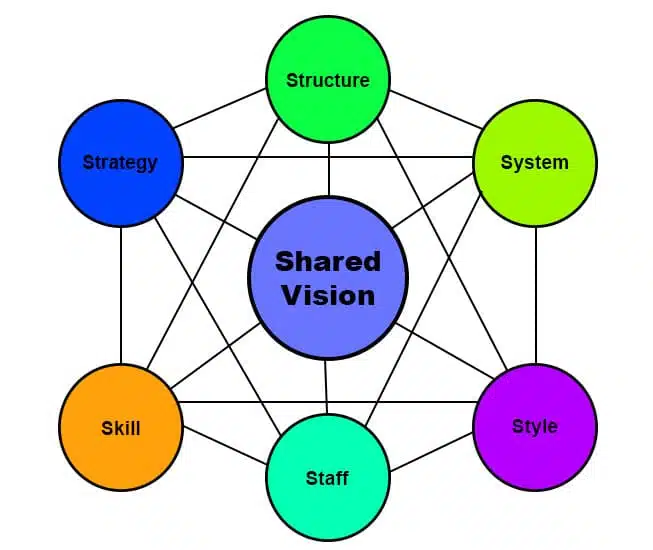
The McKinsey 7-S approach, developed by McKinsey & Company consultants, entails breaking down a transformation program into seven components to focus on:
- Strategy modification
- Structure of the company
- Business procedures and systems
- Company principles and culture are shared
- Staff engage
- Skills the staff possess
- Style or method of work
Kotter’s Idea of Change Management
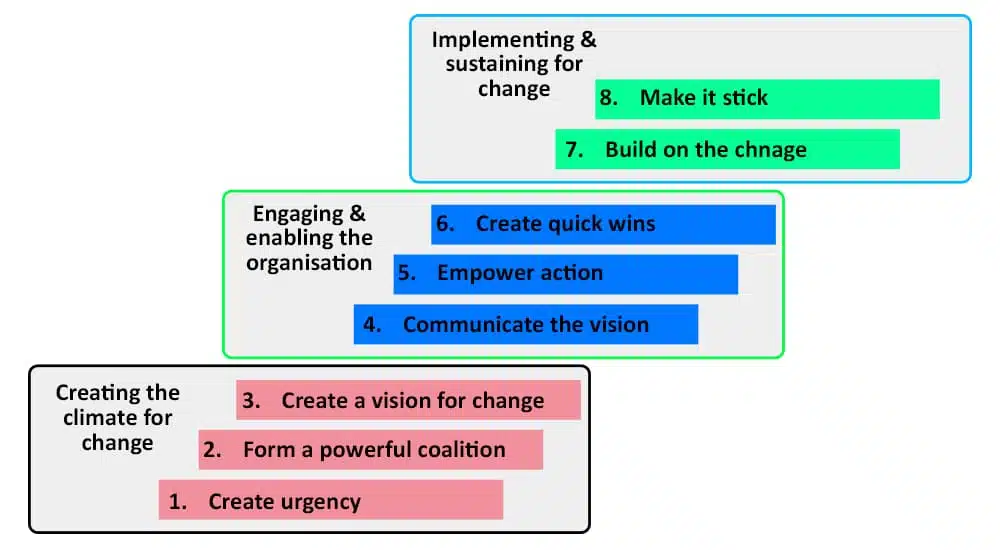
John Kotter’s change management theory focuses on the individuals taking part in a change process and their psychology. He breaks it down into eight steps:
- Create a sense of urgency.
- Create a change team.
- Create a strategic vision.
- Communicate with everyone involved.
- Identify bottlenecks and handle any issues that arise.
- Create short-term goals to divide change management strategy into manageable chunks.
- Maintain momentum throughout the implementation process.
- Maintain the modifications after the implementation process.
Breaking down the organizational transformation into five fundamental components helps to ensure that no crucial aspects are overlooked.
The ADKAR Model Examples
- Awareness: McDonald’s has successfully implemented touch-screen kiosks in its stores, revolutionizing the ordering process by allowing customers to place orders without interacting with counter staff. Although this change initially instilled fear among workers regarding potential job losses, it was executed smoothly and successfully thanks to effective communication and the emotional intelligence exhibited by the change leaders.
- Desire: A business has been utilizing basic CRM software for the past two years, but with the company’s expansion, adopting more advanced CRM software is considered. This transition necessitates the employees’ acquisition of new skills and familiarity with the new system. It is crucial to emphasize to the staff that not only will the company benefit from this upgrade, but they will also have the opportunity to enhance their skill sets and foster career growth.
- Knowledge: When transitioning from one software to another, particularly when employing intricate methodologies like Agile, it becomes essential to support team members. In this case, the assistance of Agile coaches can prove invaluable, as they guide and mentor employees throughout learning and implementing the new software.
- Ability: Before integrating the new system, change leaders will conduct thorough testing and evaluation, employing sprints and holding regular meetings with Agile coaches. These initiatives aim to assess and gauge how well employees adapt to the new working methods, allowing for adjustments and improvements as necessary.
- Reinforcement: Zendesk, a California-based SaaS startup, employs the ‘Champagne Campaign’ as a motivational tactic to inspire its staff. Whenever a sales representative successfully achieves their sales targets, the sales manager places a celebratory champagne bottle on their desk. While this example does not adhere to a specific change management style, it represents a healthy practice of publicly rewarding individuals who perform well, fostering healthy competition, and encouraging exemplary performance.
ADKAR Model of Change Template
ADKAR Model change template is as discussed below:
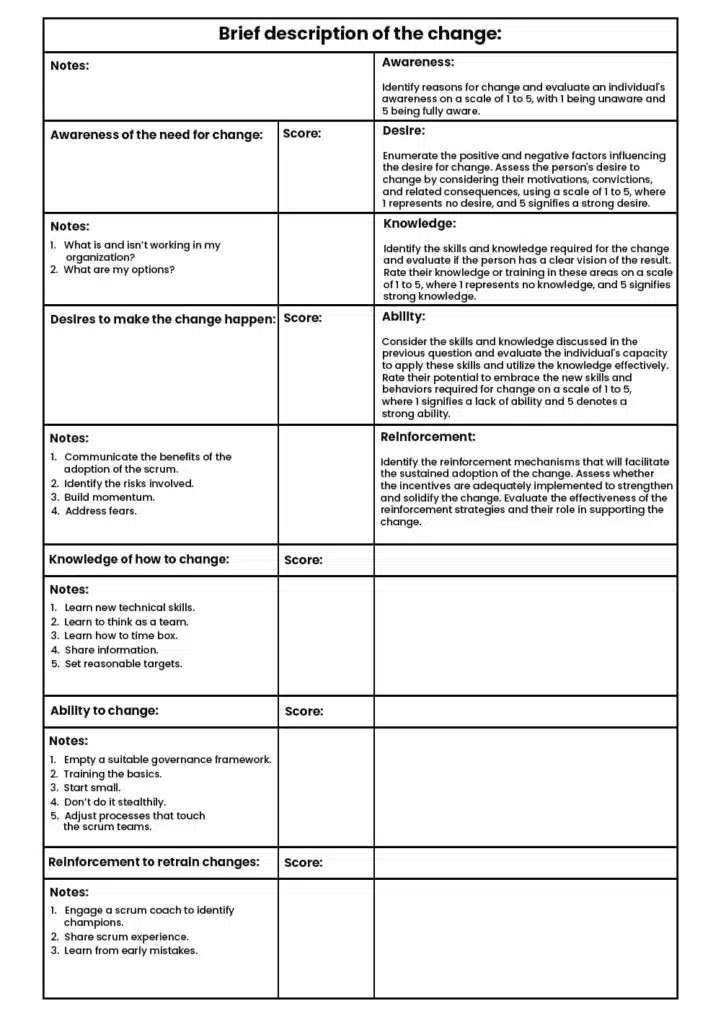
Conclusion
The ADKAR model is widely employed in change management programs, with numerous organizations embracing this proven method. This model effectively addresses organizational transitions by offering a structured approach to change management. By strongly emphasizing the individual and their experience of change, the ADKAR model empowers organizations to foster an engaged and motivated workforce, resulting in enhanced productivity and ultimately leading to better business outcomes.

I am Mohammad Fahad Usmani, B.E. PMP, PMI-RMP. I have been blogging on project management topics since 2011. To date, thousands of professionals have passed the PMP exam using my resources.

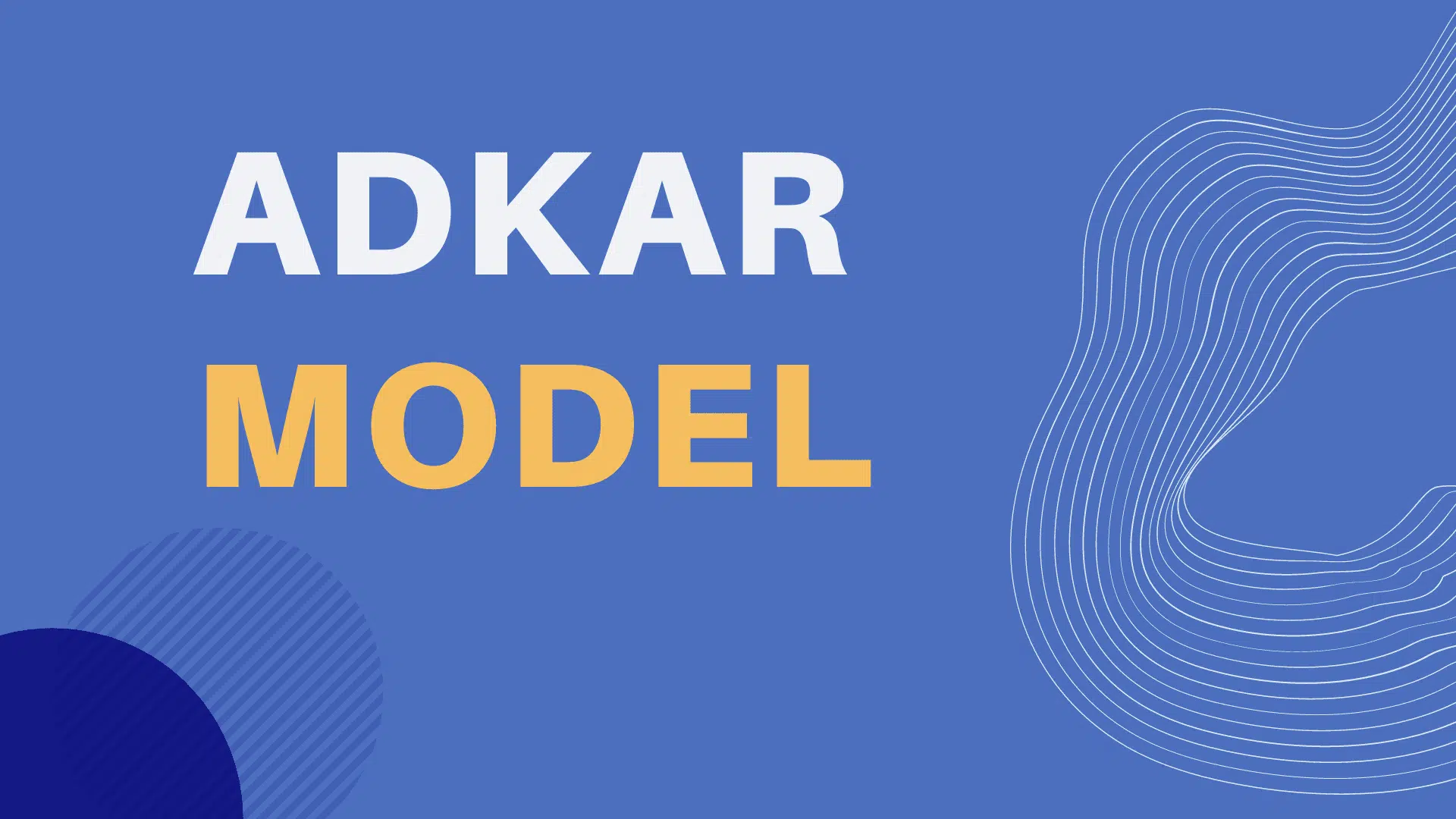

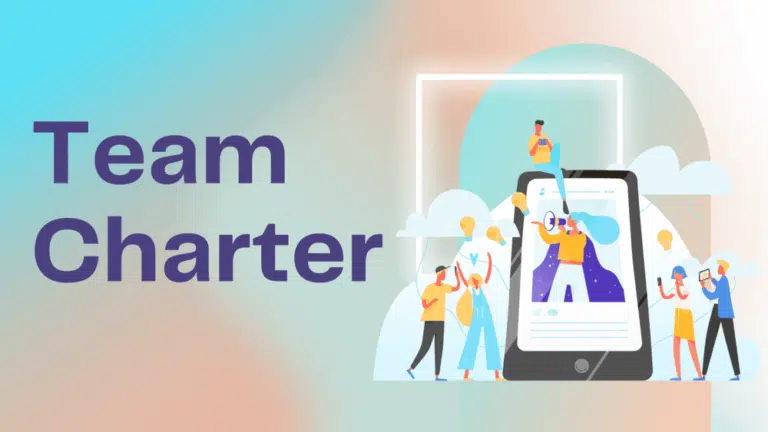
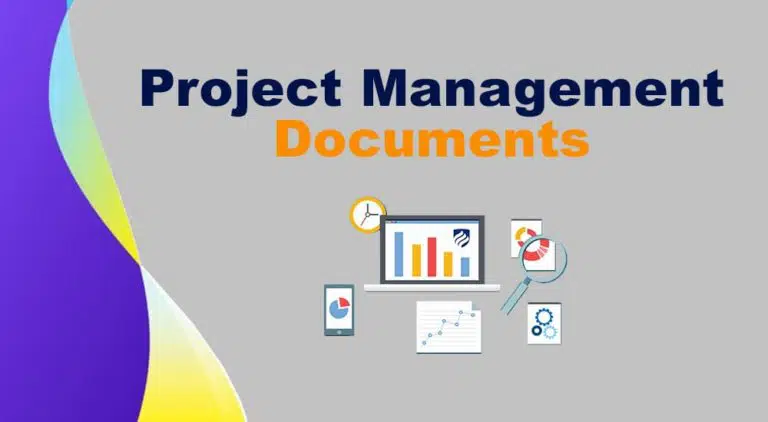

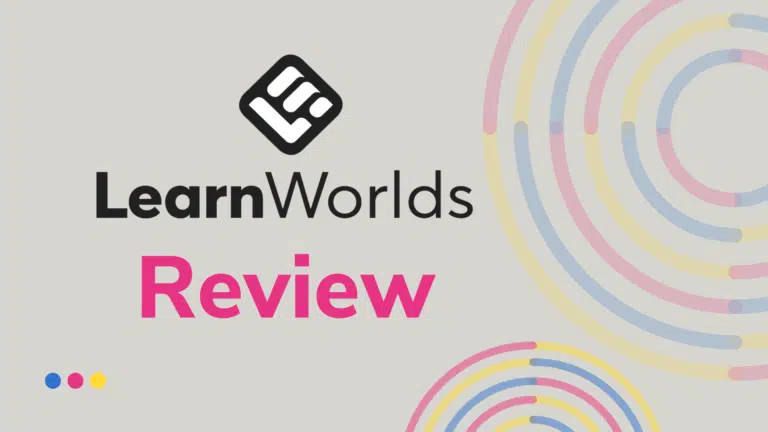

good article. keep up the good work